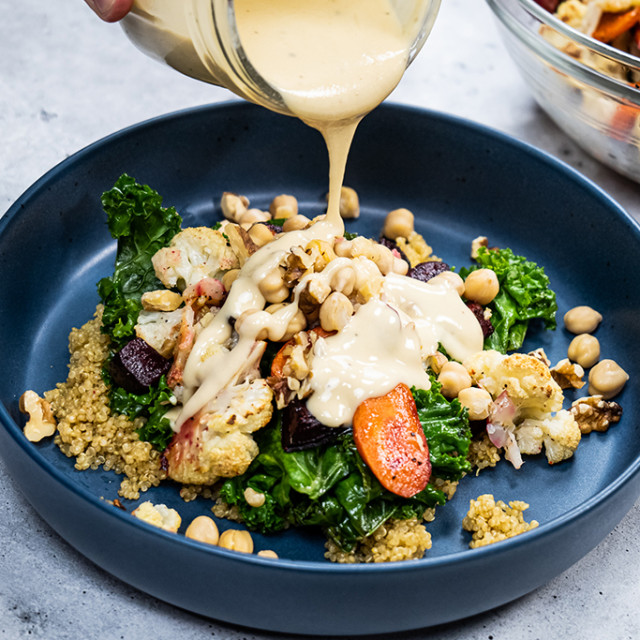
Toffee – the sticky, sweet concoction that's oh-so-delicious yet oh-so tricky (or should we say sticky?!). Easy on the eyes and taste buds, this sweet confection has been stumping home bakers and newbies in the kitchen for years during the holidays. From crystallized sugar to toffee that just won’t set, this homemade dessert has multiple ways it can go awry.
No need to fret this holiday season; we've crafted a guide on everything toffee to ensure you ace the toffee-making process! You'll find notes on how to avoid burning butter, what temperature to keep the syrup at to avoid a clumpy mess, and even a few common recipe fails to keep your eye out for!
Ideal Toffee Temperatures
Cook toffee at the wrong temperature, and you'll have hard-to-eat, chewy candy. The syrup that turns into toffee must simmer at 290°F – 300°F consistently. This temperature ensures homemade toffee has a delicious bite and a rich flavor that melts in your mouth. Using a candy thermometer, you can ensure the syrup is at the right temperature. This is one of many desserts you don't want to play guessing games with, as the temperature is a major factor in the end result.
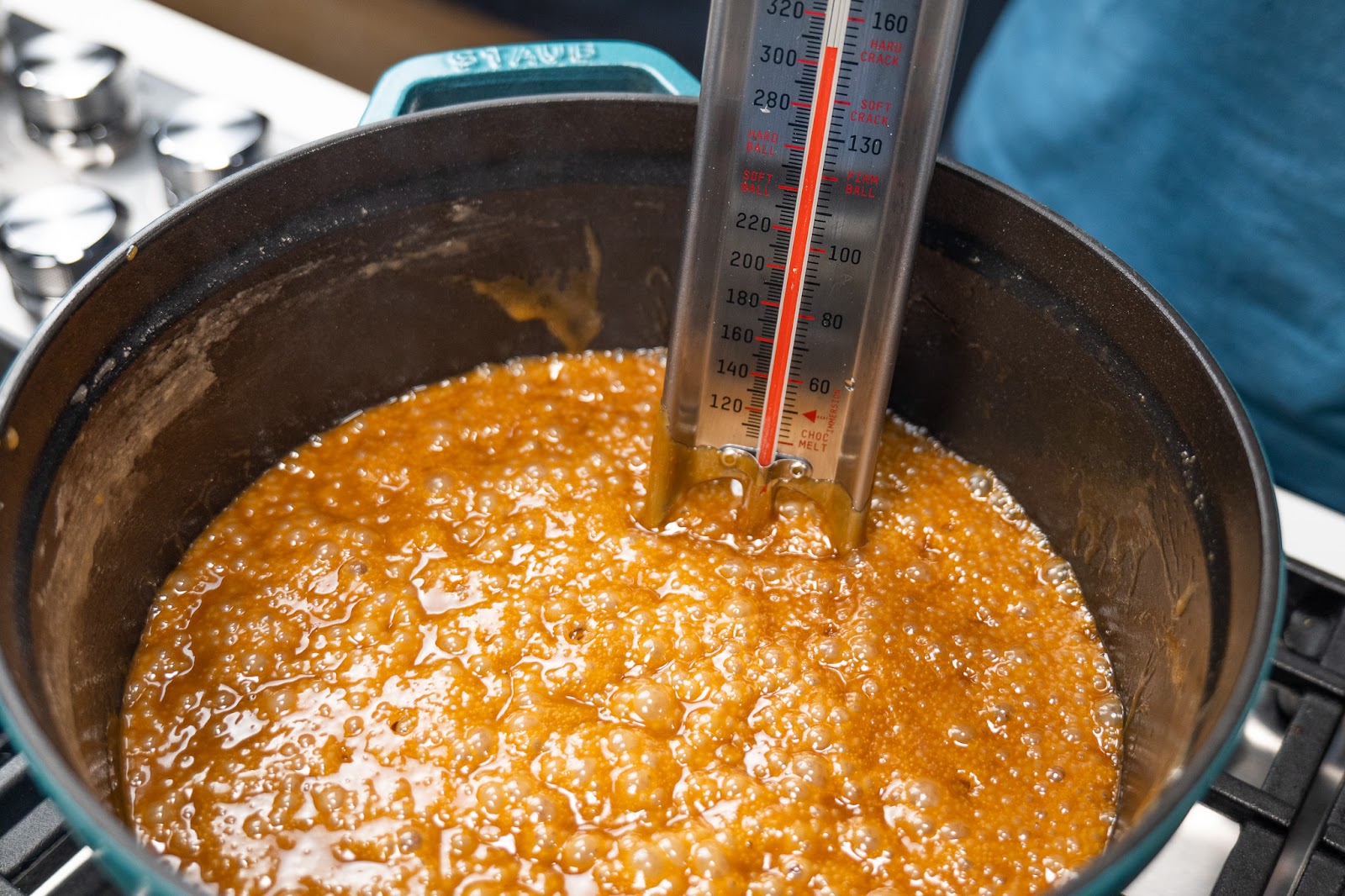
Necessary Ingredients for Toffee
You only need a few ingredients to create a buttery toffee, including:
- Unsalted butter
- Granulated sugar
- Kosher salt
- Vanilla extract
- Dark chocolate chips (can sub milk chocolate chips or semi-sweet chocolate chips)
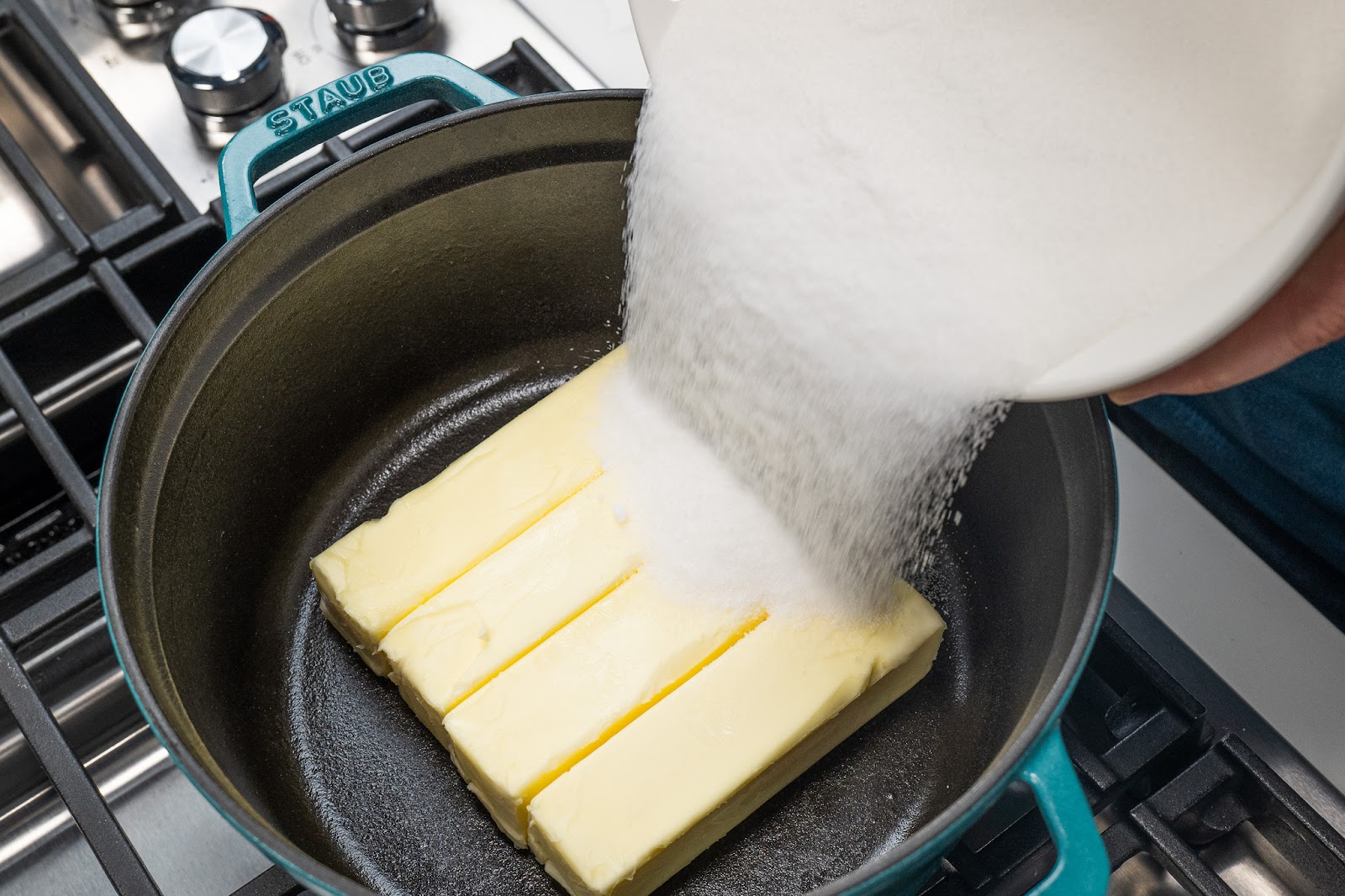
However, you can add other toppings if you wish. These toppings can include chopped nuts, bits of your favorite candy bar, chunks of cookies (like Oreos), and dried coconut flakes; you name it!

For more details on creating toffee from scratch, check out our So Good It’s Gone Toffee recipe.
Toffee Recipe Timing
Timing is another key factor when creating toffee, from timing the simmering of the syrup to allowing the toffee to cool in the fridge. Expect to spend about 40 minutes making homemade toffee (including prep time). It will take about five minutes for the butter to melt. Then, you can increase the temperature to allow the toffee to come to a boil.

The toffee can take 15-30 minutes to be ready to come off the stove. The biggest indicator is the color; it should be a golden amber hue (think the color of almond skin!). The other indicator that the syrup is ready is that it has reached 290°F-300°F.
Cooling the toffee in the fridge is another key component, as your toffee will be set during this process. It will take about one hour for your toffee to be completely set and ready for the next step. Although it's tempting, avoid removing the toffee from the fridge until it has completely cooled and hardened.
Toffee Making Tips
Implementing the below toffee-making tips will help your homemade toffee be gift-worthy for the holiday season.
1. Don’t rush toffee – keep the temp consistent.
If you're on a tight schedule or have waited until the last minute to create toffee, it can be tempting to turn the temperature up higher to make toffee faster. Unfortunately, this will likely lead to burnt butter, separating between the butter and sugar, and otherwise ruined toffee. Meaning you'll have to restart the toffee-making process from the beginning.
The key to great toffee is patience and a consistent temperature. Once the syrup is simmering at the right temp, ensure it remains there. Don't crank the heat up or down during this step.
2. Skip toffee making on humid days.
Even the environment you are cooking in can affect toffee. If the day is particularly humid, skip making toffee for the day. When the kitchen is humid, toffee can begin to reabsorb the moisture. This environment leads to toffee which is softer and chewy. It can also cause the toffee to not properly set.
3. Keep the mixture moving.
Toffee is one homemade dessert that you can't let sit by itself. It's necessary to mix the syrup consistently. Otherwise, you risk the mixture burning. Consistent stirring can also prevent the mixture from separating. Once the butter separates, it can usually be fixed, yet it's challenging and adds time to the recipe.
4. Don’t skip the salt.
You may have noticed it separating if you've made toffee sans salt (or salted butter) before. Salt is a key ingredient that helps stabilize the mixture. Ensure you include salt in your toffee recipe to avoid this sticky situation.
5. Have a prepared baking sheet ready.
Toffee begins cooling and hardening once it's off the heat. If you don't have your baking pan ready beforehand, your toffee won't turn out properly. Always have the baking sheet greased and ready to use before adding any ingredients to the pan.
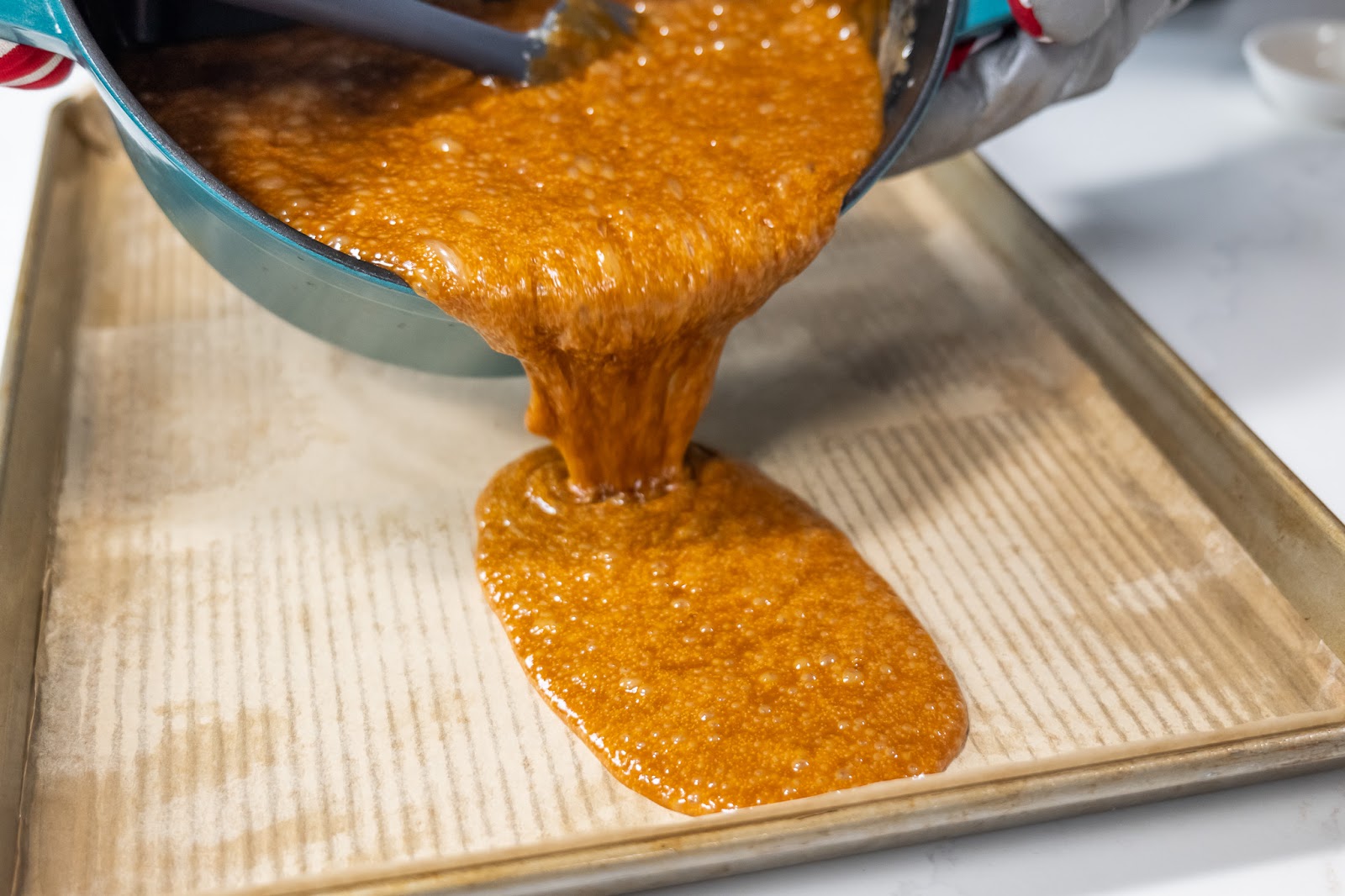
Bonus Tip: If you plan on adding chocolate chips, add the chips right after you pour the toffee mixture into the pan. Otherwise, the melted chocolate may not stick to the toffee.
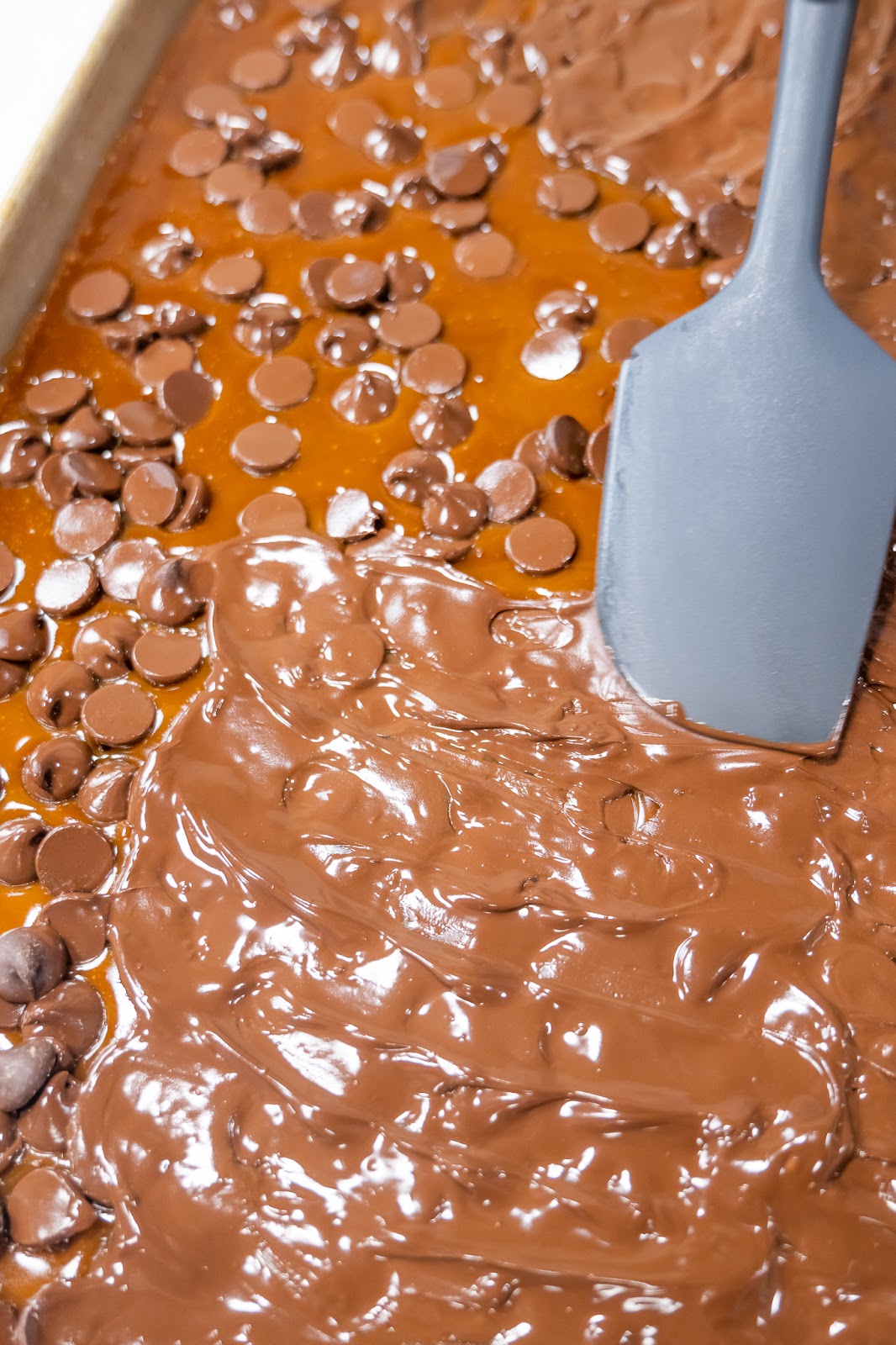
6. Use the right pan.
When creating toffee, you want to ensure your pan heats evenly. If you have a pan that doesn't, it can lead to uneven cooking or scorched syrup. Grab a sturdy, heavy-duty, large pan for creating toffee. Avoid using lightweight, cheaper pans or pans that have uneven bottoms.
How to Avoid Crystallization
One of the biggest blunders in toffee making is taking steps that create crystallization in the mixture. Crystallization means your toffee will be grainy when you bite into it. This texture can occur for several reasons, from over-stirring to not heating the sugar properly. Follow the below notes to avoid crystallized sugar.
- Ensure the sugar in the pan melts completely before you bring it to a boil. When you've heated the sugar correctly, you'll notice a smooth texture (no clumps).
- Sugar that sticks to the sides of the pan and doesn’t heat properly can also cause crystallization. Use a wet pastry brush to sweep the extra sugar crystals from the side of the pan into the mixture.
- While it's possible to under-stir, you can also over-stir the mixture. Once the syrup is boiling, only stir it occasionally.
Toffee Storage
Once you've created toffee bits, it's important to store them correctly. Proper storage means homemade toffee can last in the fridge for up to two months. Otherwise, it will go bad much more quickly. Keep the finished toffee in an airtight container of your choice. Lay parchment paper between layers to prevent the chocolate or toppings from sticking to other toffee pieces.
Find more tasty desserts for the holiday season using our recipe finder! Select which type of dessert you want to create (cakes, cookies, candies, etc.). Then, a list of tasty desserts you can make for loved ones will pop up. You'll find everyday goodies and holiday-themed treats.






